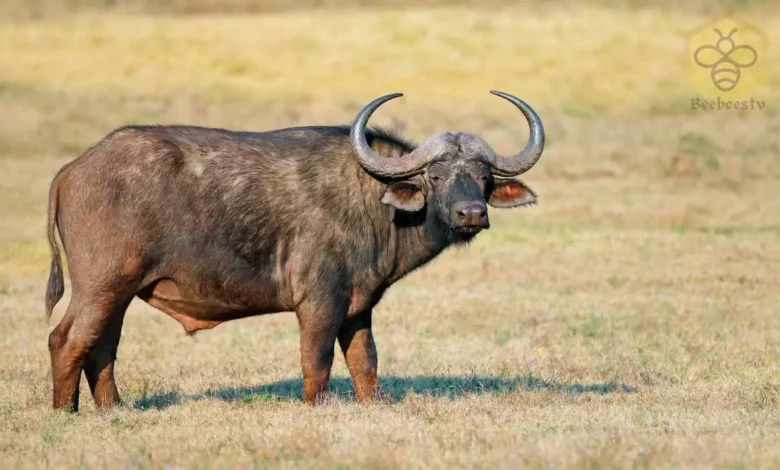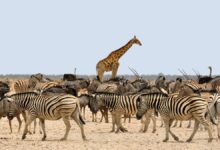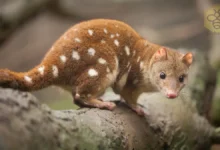Buffalo: The Mighty Beasts of the Grasslands

Buffalo: The Mighty Beasts of the Grasslands
Buffalo
Introduction
Buffaloes are among the most powerful and resilient animals in the world, known for their strength, endurance, and importance in ecosystems and human societies. Found in Africa and Asia, these large bovines play a crucial role in agriculture, culture, and biodiversity. Despite their tough nature, buffaloes face threats from habitat loss, hunting, and disease.
Scientific Overview
Scientific Name
Buffalo species belong to the genus Bubalus and Syncerus. The most well-known species are:
- African buffalo (Syncerus caffer)
- Water buffalo (Bubalus bubalis)
Common Name
Buffaloes are commonly referred to as “buffalo,” “water buffalo,” or “African buffalo,” depending on the species.
Scientific Classification
| Kingdom | Animalia |
| Phylum | Chordata |
| Class | Mammalia |
| Order | Artiodactyla |
| Family | Bovidae |
| Genus | Bubalus (water buffalo) / Syncerus (African buffalo) |
| Species | Various (bubalis, caffer, etc.) |
Types
Buffaloes are broadly categorized into two main types:
- African Buffalo (Syncerus caffer) – Found in sub-Saharan Africa, known for its unpredictable temperament.
- Water Buffalo (Bubalus bubalis) – Domesticated for farming and milk production, commonly found in Asia and parts of Europe.
Habitat and Distribution
Buffaloes inhabit a wide range of environments, from grasslands and savannas to wetlands and forests.
- African buffalo: Found in the savannas and grasslands of sub-Saharan Africa.
- Water buffalo: Native to South and Southeast Asia but domesticated in many other regions. Wild water buffaloes are now endangered and mostly found in protected reserves.
Physical Characteristics
Size and Weight
Buffaloes are large and muscular, with males generally larger than females.
- African buffalo: 1.4-1.7 meters (4.6-5.6 feet) tall at the shoulder, weighing 500-900 kg (1,100-2,000 lbs).
- Water buffalo: 1.5-1.8 meters (4.9-5.9 feet) tall, weighing 600-1,200 kg (1,300-2,600 lbs).
Appearance
Buffaloes have sturdy bodies, thick skin, and curved horns.
- African buffalo: Dark brown to black, with thick, curved horns that form a solid boss in males.
- Water buffalo: Lighter brown to gray, with long, backward-sweeping horns. Domesticated breeds have shorter hair and different body sizes.

Diet and Feeding Habits
Buffaloes are herbivores and graze on grasses, aquatic plants, and shrubs. They require access to water sources and often feed during cooler parts of the day. Water buffaloes prefer wetland vegetation, while African buffaloes graze in savannas and forests.
Predators and Threats
While adult buffaloes are strong and rarely fall prey to predators, young or injured individuals can be targeted by:
- Lions (primary predator of African buffaloes)
- Crocodiles (ambush buffaloes at water crossings)
- Tigers (hunt wild water buffaloes in Asia)
- Hyenas and wild dogs (attack weak or isolated buffaloes)
Human threats include:
- Poaching for meat and trophies
- Habitat destruction due to deforestation and agriculture
- Diseases such as foot-and-mouth disease and bovine tuberculosis
Reproduction, Babies, and Lifespan
Buffaloes have a gestation period of about 10-11 months, after which a single calf is born. Calves remain dependent on their mothers for several months, joining herds at an early age.
- African buffaloes live 15-25 years in the wild.
- Water buffaloes live 25-30 years, with domesticated individuals living longer.
Population and Conservation Status
- African buffalo: Classified as “Near Threatened” due to habitat loss and hunting, with stable populations in protected reserves.
- Wild water buffalo: Listed as “Endangered,” with fewer than 4,000 individuals left in the wild. Domesticated populations are thriving.
Behavior and Lifestyle
Buffaloes are highly social and live in herds ranging from small family groups to thousands of individuals.
- African buffalo: Known for their unpredictable and aggressive behavior, often defending themselves against predators in groups.
- Water buffalo: More docile, often found in farming environments. They enjoy wallowing in mud and water to regulate body temperature.
Ecological Role
Buffaloes contribute to ecosystem health by grazing and dispersing seeds. Their movement helps maintain grassland balance, and their wallowing behavior creates wetland habitats for other species.
FAQs About Buffaloes
1. Are buffaloes and bison the same?
No, buffaloes and bison are different species. Bison are native to North America and Europe, while buffaloes are found in Africa and Asia.
2. Why do water buffaloes like mud?
Water buffaloes wallow in mud to cool down, protect their skin from insects, and prevent dehydration.
3. Are African buffaloes dangerous?
Yes, African buffaloes are considered one of the most dangerous animals in Africa due to their unpredictable and defensive nature.
4. Can buffaloes be domesticated?
Only water buffaloes have been domesticated for farming, milk production, and transportation. African buffaloes remain wild and untamed.
5. How fast can a buffalo run?
Buffaloes can run up to 35 miles per hour (56 km/h) when threatened, making them fast and powerful animals.
Conclusion
Buffaloes are remarkable animals, playing key roles in both ecosystems and human economies. While domesticated water buffaloes are essential for agriculture, wild species like the African and wild water buffaloes face increasing threats. Conservation efforts are crucial to ensuring their survival in the wild.


